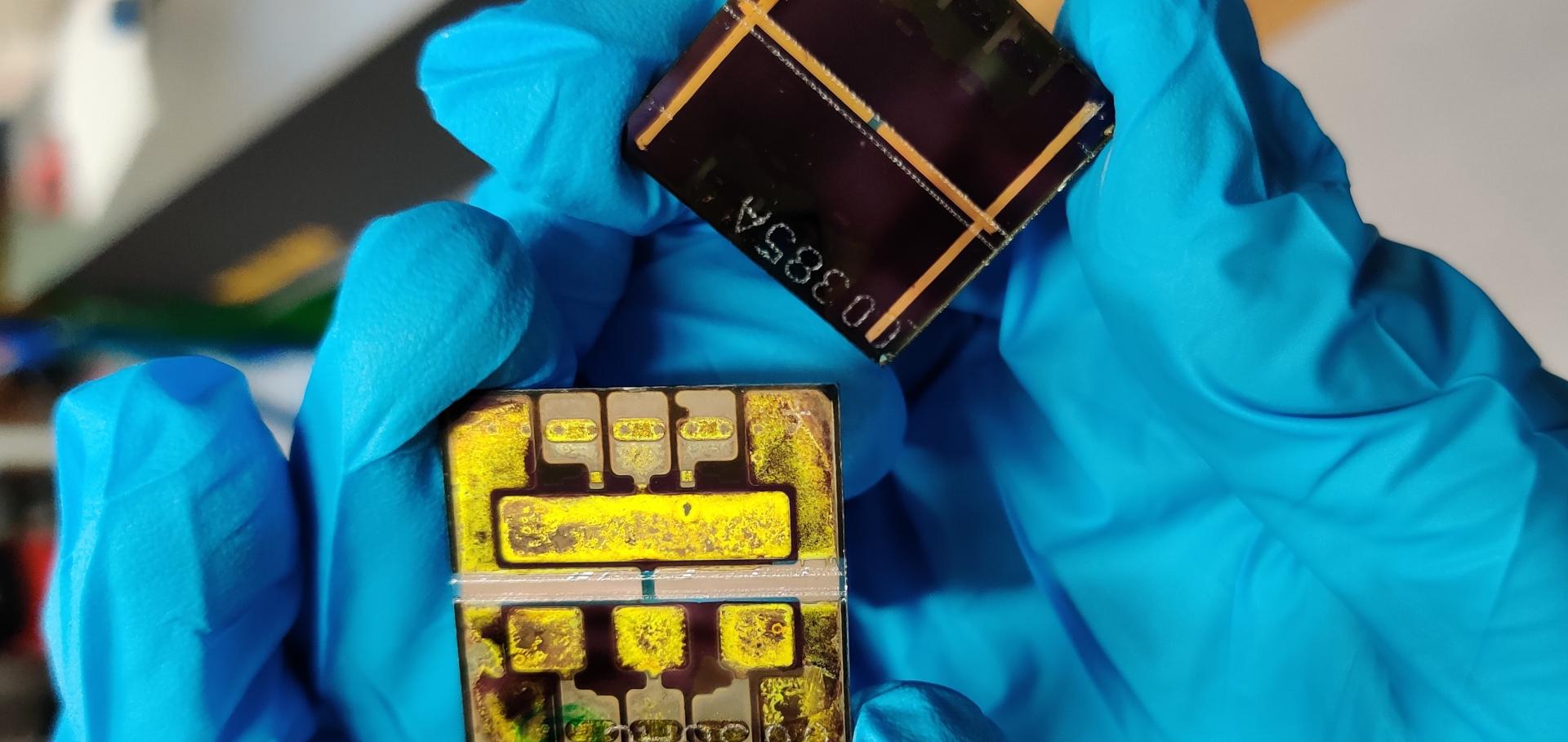Stability of perovskite solar cells
Abstract:
Metal-halide perovskites have emerged as promising next-generation solar cells and have achieved high power conversion efficiencies, rivalling current technologies. The chemical stoichiometry of perovskite can be easily varied to tune the material’s bandgap to produce a range of photovoltaic devices unrealised by other materials. Halide perovskites can also be easily fabricated from solutions or evaporated at a possibly low cost. However, what use does a solar cell have if it only lasts a few months? Little! So, I choose to explore the material stability of lead-halide perovskites in this thesis. Making stable halide perovskites would allow the fabrication of more efficient and more cost-effective solar cells. Hopefully, that can alleviate some of the possible outcomes of climate change. Even if perovskites are unsuitable for photovoltaic applications, extending the range of possible semiconductors away from only classically inorganic ones to more hybrid materials will hopefully bring an advantage for humanity. And for any semiconductor application, a stable material is needed!
The challenge with improving the stability of halide perovskites lies in the manifold of different factors one has to consider:
• A variety of different environmental conditions in which the device must be stable
• The different materials which are in contact with the perovskite absorber
• The myriad of chemical stoichiometries that constitute lead halide perovskites, each facing different stability issues, to name some:
o Phase stability
o Halide segregation
o Cation segregation
o Evaporation of the organic component
o Sublimation of the halides
o Ion migration
One of the critical findings in this thesis is that instabilities are not inherent for a specific perovskite, e.g., FAPbI3, but strongly depend on how the material is made. I developed two new fabrication routes (the DMA+ and 2D-3D-route), which, surprisingly, resulted in more stable perovskites compared to the classical routes with, for example, DMF and DMSO. Even though the classical and new routes both deliver a nominal almost identical material. Critical factors for that are the processing solvents and the crystallisation. With the DMA route, I got significantly more stable mixed halide perovskites. At 65 °C and under full-spectrum illumination, the DMF/DMSO devices had a T80 (the time until it reaches 80% of its peak median efficiency) of 780 h, while the DMF/DMACl devices had a T80 of 1190 h. 32 devices of each were measured. The best DMF/DMSO and DMF/DMACl devices had a T80 of 1040 h and 1410 h, respectively. At 85 °C and otherwise the same aging conditions, the DMF/DMSO and DMF/DMACl devices had a median T80 time of 330 h and 430 h, respectively. 27 devices were measured for each. The most stable DMF/DMSO and DMF/DMACl devices at 85 °C had a median T80 time of 380 h and 490 h, respectively. In terms of efficiency, I found that the DMA route produces equally efficient devices as the DMF/DMSO route.
Besides these fabrication methods, I also developed a new passivation type. It is dynamic. It allows for the passivation of defects not only during the fabrication but also to passivate newly evolving defects during the operation. The molecule is called HUBLA (hindered urea/thiocarbamate bond Lewis acid-base). It is inspired by the field of living polymers. I prove the dynamic passivation of HUBLA chemically through X-ray photoelectron spectroscopy (XPS) and physically through photoluminescence maps of aged and not-aged perovskite films. I then go on to show the stability of perovskite films under various stressors. HUBLA improves the stability of the thin films under moisture and heat. In devices, HUBLA significantly improves the efficiency and stability. The best-performing n-i-p device with HUBLA reaches 24.7%, while the control reaches 21.7%. In p-i-n devices, the best-performing device with HUBLA reached 25.1% and for the control, 22.7%. Devices under 1 sun illumination at 85 °C retained less than 50% of their initial performance after 431 h. The same devices under the same conditions with HUBLA retained 88% of their initial value over 1000 h. In N2 at 85 °C and under 1 sun, the control devices have a T80 of 866 h, and the HUBLA devices maintain 94% after aging for nearly 1500 h. At 85 °C in N2, the HUBLA devices retained 90% of their initial efficiency after 21864 hours. Nearly 2.5 years at the highest tested operating temperature for photovoltaics, and the devices still worked well. I believe that this shows the extraordinary potential of dynamic passivation.

